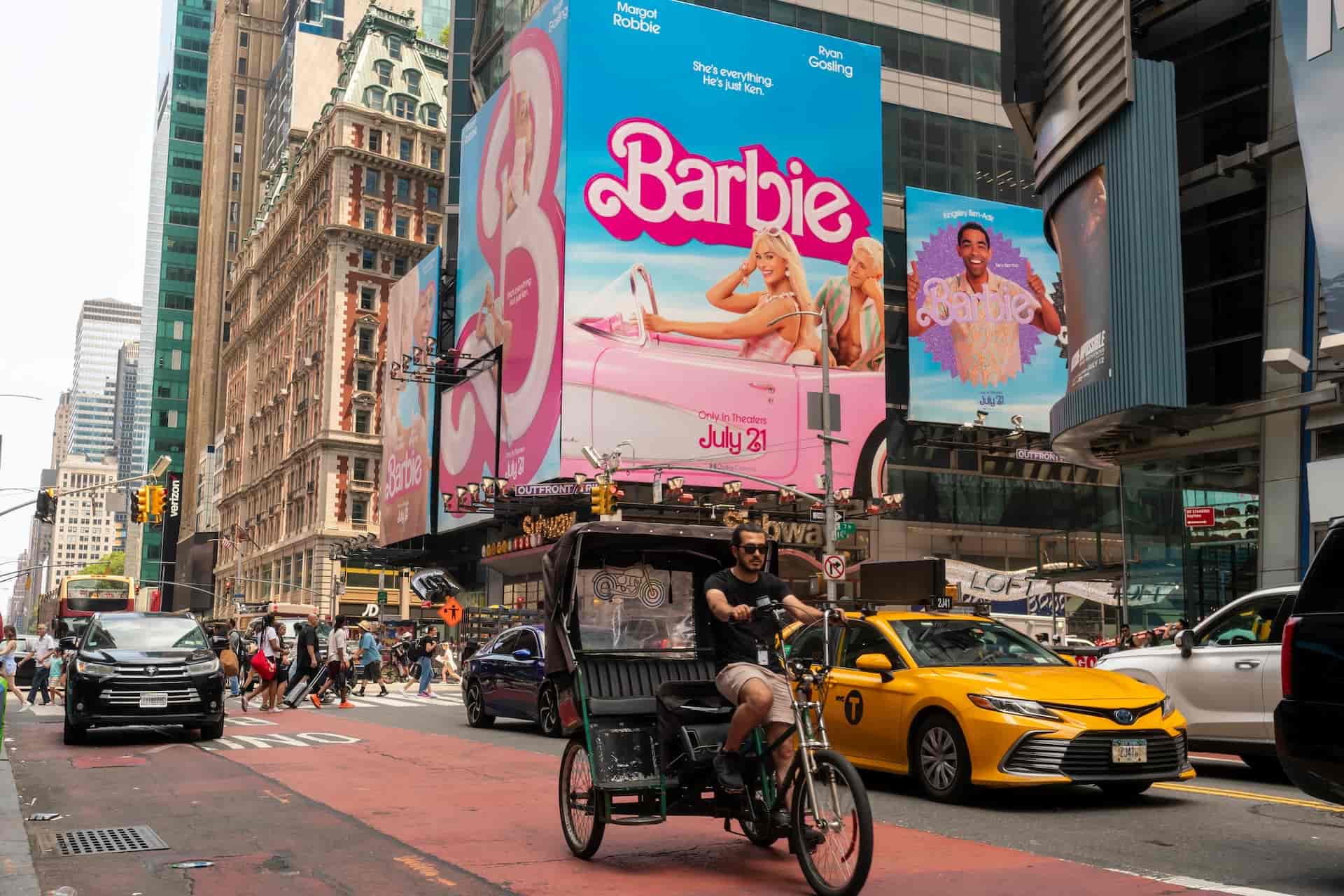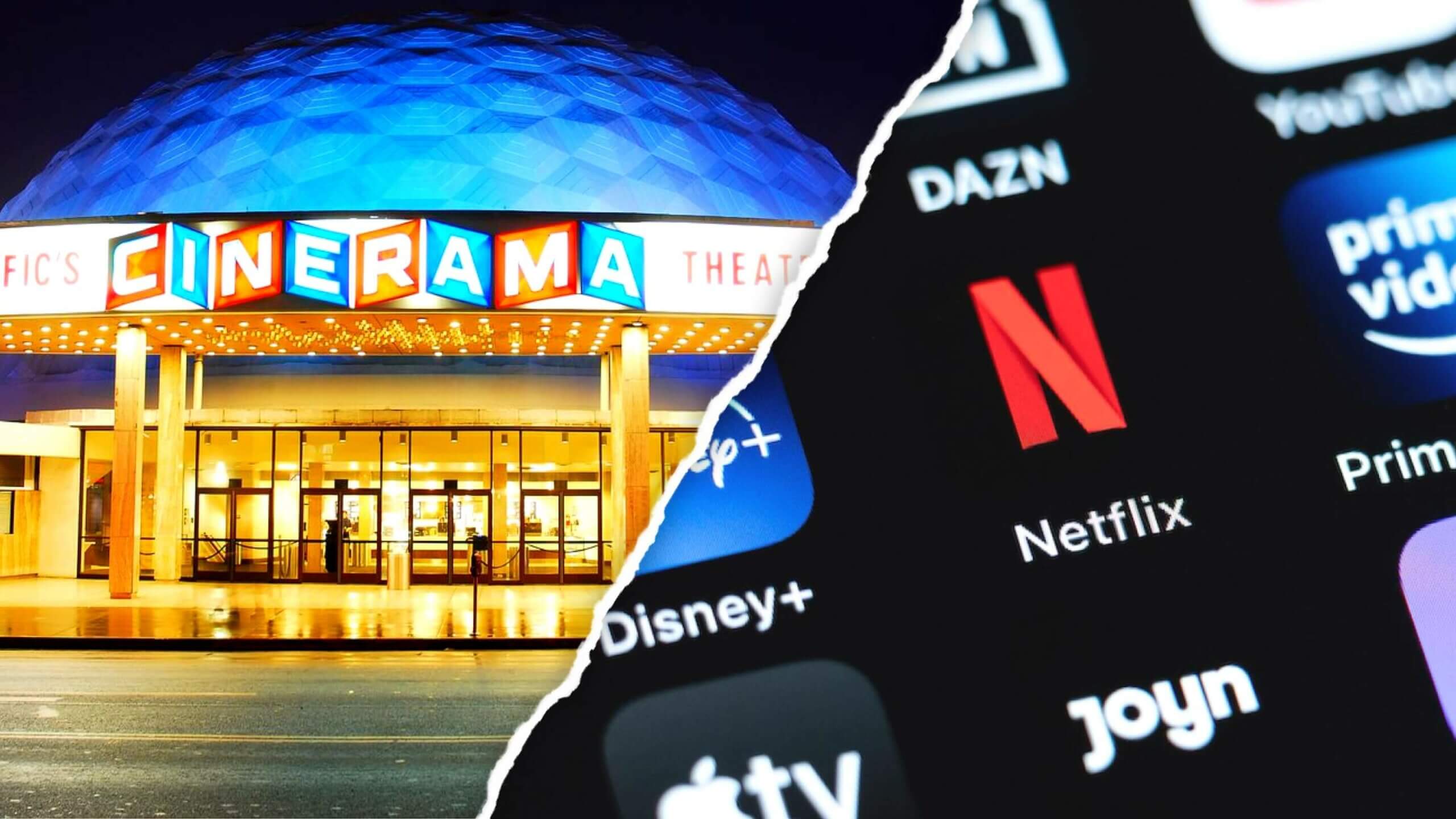Distribution is an integral part of the film industry; without it, a film doesn’t get seen. Yet for many filmmakers starting out their careers, the distribution process is murky and intimidating. This is compounded by film distribution’s rapidly shifting status in the age of streaming. So what is film distribution? How does it work, what is its history, and what is its future?
What is Film Distribution?
Let’s define film distribution
Before we get into the weeds of distribution, let’s get a bird’s eye view of the term. When someone mentions film distribution, what exactly are they referring to?
FILM DISTRIBUTION DEFINITION
What is film distribution?
Film distribution is the process of making a film available for audience viewing. This means having a film be purchased or rented by a distribution company, which will then take the steps of marketing and displaying the film.
Distribution, and the path to it, can take many different forms, but there is a general process most films follow. If a distributor thinks your film is a good fit for them, a contract will be signed and the distributor will do everything possible to maximize profits, licensing the movie in as many countries as they can for as long as they can.
Types of Distribution:
- Theatrical
- Direct-to-video
- Video-on-demand (including streaming)
- Non-theatrical (educational, etc.)
Movie distribution is the second of the three pillars of the film industry. The first is production (the making of the film), and the third is exhibition (actually showing the film to audiences).
What is Film Distribution?
What does a film distributor do?
Not since the days of the nickelodeon have filmmakers lugged their movies’ reels to a theater and asked them to show it to audiences (and that’s an oversimplification of what happened in the days of the nickelodeon).
The distributor has acted as this middle man but what exactly do they do?
There are three primary steps in the movie distribution process: licensing, marketing, and delivery.
Licensing
To kick things off, a studio will sign a contract with a distribution company. Many large studios have their own distribution companies, but independent studios will market their films around to a variety of distribution firms.
The contract is critical for both sides: it essentially outlines how the money will be split and for how long.
Most contracts can be categorized as leasing or profit sharing models. With a leasing model, the distribution company will pay a predetermined amount for rights to the film – the production company will get the same profit whether or not the film does well.
For profit-sharing, each party will agree on getting a percent of the film’s box office. Depending on the contract, the distributor will usually receive between 10% and 50% of the profits.
Many contracts are a hybrid of these two models, with the distributor paying an up-front fee and then sharing profits.
The contract also stipulates length – essentially, how long the distributor will have the rights of the film. This is usually a considerable amount of time, like ten to fifteen years.
This video discusses distribution agreements more in depth:
Distribution deals • What is film distribution?
From there, the distributor will work to get the film shown in as many market territories across the world as possible – it’s all about maximizing profit.
Local distributors, meanwhile, represent a single territory. In this case, a production company may grant rights to multiple different local distributors in different territories.
Marketing
Distributors are also in charge of marketing. This involves everything from trailers, press materials, EPKs, posters, contracting a PR firm, and more.
What marketing will look like for a given film depends on the distributor’s calculation of the film’s commercial potential. If the film is poised to be a niche but critically-acclaimed indie, a distribution company may not spend much on big-budget TV commercials and instead focus on sending screeners to journalists to generate word-of-mouth.
For a tentpole production, a distribution company will likely go all out in order to maximize profits. There’s far less risk of throwing good money after bad.
For example, spending money for a billboard in Times Square for Barbie makes sense.

Marketing The Avengers • What is film distribution?
Delivery
Finally, the film is ready to be seen. So how does the film get into the hands of exhibitioners? That’s also the job of distributors. In the heyday of film, this meant physically getting the reels to theaters, which could be a costly endeavor.
Today, the assets are more commonly Digital Cinema Packages (DCPs). These are high resolution files that are encrypted and sent to theaters.
What is Film Distribution?
How to get distribution
Some movies have distribution from the get-go. Major studios make them, often within their deal with a production company.
Next, the studio distributes the film through its distribution division. There are a lot of nuances within these types of deals, including when studios split regional distribution rights.
But that's another conversation, and if your film is set up at a major studio, you won't have to worry about how to get distribution.
If your film is independently made (self-financed or made with an independent studio), distribution is less of a sure thing. There are a few different avenues independent filmmakers can take to secure distribution.
Festivals
Festivals are a great way to garner attention for your film. The more attention your film has, the more likely a distributor will pick it up.
Of course, it is ideal for your film to do well at one of the top film festivals, like Sundance, Tribeca, Toronto, Telluride. These festivals are awash in distributors looking for the next indie hit.

Telluride • Film distribution process
Once at a festival, make sure your film has a strong press kit and garners a big crowd. Again, if a distributor sees that your film is beloved by a festival audience, they’ll be more likely to want to obtain it.
Even if your festival premiere doesn’t secure distribution outright, it may help you obtain a sales agent.
Sales Agents
Sales agents can help a film get seen by movie distributors. Think of them as agents for your movie.
If you have a rep, agent or manager, they may be able to help get someone on board to help sell the finished film.
For more on the sales agent route, check out this video:
The sales agent approach • Film distribution process
It's also possible that a rep from someone on the film, a star, for example, could point you and the movie in the right direction.
A sales rep will help try and connect your project to the right distributor. Of course, they'll also take a fee.
Distributor Screening
Distributor screenings are exactly what they sound like: a screening of your film tailored to distributors. Usually, these are set up by sales agents, since they should have a plethora of connections to prospective distributors.
Without a sales agent or distributor connections, this may prove to be fruitless.

Distributors watching your film
Self Distribute
This is becoming an increasingly popular option for more savvy and entrepreneurial filmmakers.
It's possible to hire a theatrical booker and get a film in theaters for a limited release. You can also put a finished movie on Vimeo or VHX, and/or get a movie on digital platforms like Amazon, iTunes, and Netflix.
Filmmakers can also sell some rights to the film to movie distributors and retain others. For example, you can make and sell your Blu-rays.
A guide to self-distributing:
How to self distribute • Film distribution process
Film Hub
Film Hub is another great resource that helps filmmakers to get access to movie distributors.
It’s a digital marketplace that helps connect finished films to audiences. It has the potential to cut out so many of the middle men and “gatekeepers” that prevent creators from connecting their product to the right audiences.

Film Hub Distribution • How to distribute a film
Film Hub is the direction movie distribution is going in. All the knowledge about the rest of the process is valuable, in many cases necessary. But Film Hub gives us a glimpse into a different distribution future.
Related Posts
What is Distribution in Film?
Choosing a Distributor
As an independent filmmaker, you may work so hard to get distribution that any attention from any distribution company seems like a Godsend. But this isn’t always the case — before signing the dotted line, make sure the distribution company is the right fit for your film.
Vet the company
First, look into the distribution company. Do they have a history of success? Have other directors been happy with their experience there? Have they come back?
One thing to be aware of with distribution companies is how they might try to "hide" certain profits from you. For example, a company might say they plan to spend something on advertising the movie.
Sounds great, right? Not always. The downside of this is that they can claim they spent a whole lot, even if they didn't need to. And then when the income starts to come from the movie, they'll hide it in that expense.
Looking at the history of the company can help you predict if they’ll treat you fairly. This video has some more vetting tips:
What to consider in a distributor
What is the proposed release strategy?
In other words, what is the company planning on doing with your film? How long will it be in theaters? Will it be in theaters at all? How will it be marketed?
These are questions that you should know the answer to.
Know your demo
By the time your film is complete, you should have a pretty good idea as to who it will appeal to — your target demographic. This can be horror fanatics, documentary enthusiasts, etc..
Now take a look at the prospective distribution company. Do they have a similar vision for the film? Do they have experience within these communities? There are many smaller distributors which deal with specific genres and audiences– make sure your film lines up with them.
What is Distribution in Film?
What Distribution Looks Like Today
Much of the film industry is evolving quickly these days, so it should come as no surprise that so is film distribution. The big shift can be boiled down to new technology and its effect on windows.
Windows refer to the amount of time a film is released on a certain media technology. The windows are arranged in order of price to a viewer, beginning with priciest first.
Initially, there was one window: the theatrical window. Then, with the advent of television, there were two windows, theatrical and television. Then home media cropped up, and that window was inserted between theatrical and TV.
Fast forward to today and the dominance of streaming. With the pandemic, the first and oldest window, the theatrical release, was smashed. Ever since, it’s been struggling to reassert itself.
Essentially, streaming has compressed the windows before it. Movies are in theaters for far less time than they once were. And because the theatrical window is the most lucrative window, this means less money for distributors and, in turn, filmmakers.
It also means there’s less room for unexpected runaway hits. Take the Oscar-winner Everything Everywhere All At Once, an independent film. It became a massive hit, much bigger than anyone expected, because its distributor, A24, insisted on putting it in theaters.
More and more people started seeing it, and it stayed in theaters for longer and longer (it returned to theaters when it cleaned up at the Academy Awards).

Indie darling made good
EEAAO’s story is rarer than ever, because many independent films of its ilk are not able to get theatrical distribution, and so do not experience word-of-mouth explosions. Rather, many languish in the depths of streamers where few if any will see them.
This video gets more in depth with the changes in the distribution field:
Changes in the movie distribution
This revolution in distribution and exhibition has caused a revolution in Hollywood as a whole, and it’s not yet clear what exactly the fallout will be. But the core of distribution remains true: getting films available to be viewed by audiences. That much won’t change.
Related Posts
Up Next
Ultimate List of Film Grants
Before you need to worry about distribution, you need to worry about getting the funding to make your movie. We know, a lot of worrying. But we’re here to relieve your stress by giving you a comprehensive guide to film grants.
Up Next: Film Grants →
Showcase your vision with elegant shot lists and storyboards.
Create robust and customizable shot lists. Upload images to make storyboards and slideshows.
